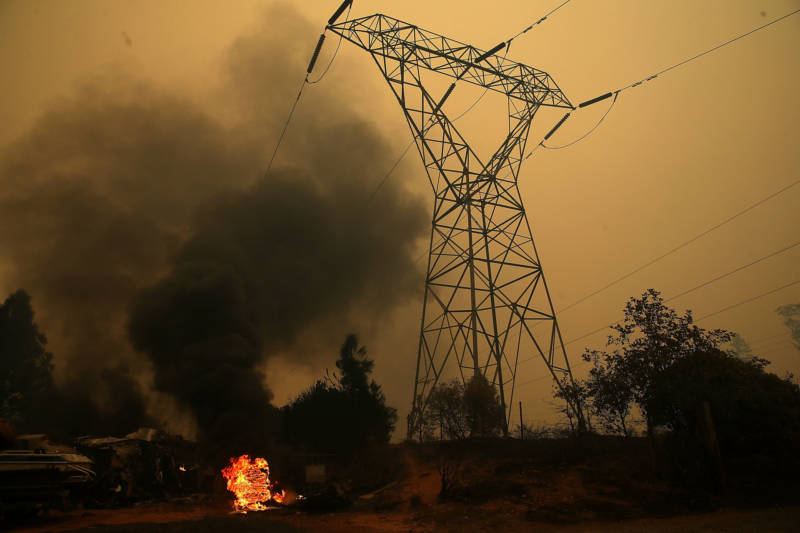But the company did not end up shutting off the electricity and says that even if it had, it would not have included that transmission line because its pre-emptive shutoff program involves only lower-voltage distribution lines.
Company spokeswoman Megan McFarland confirmed Monday afternoon that the Big Bend line is one of those lower-voltage lines.
“The circuit identified in the November 16 EIR (electric incident report) would have been de-energized if the criteria for PSPS (public safety power shutoff) had been met,” McFarland said in an email.
Original Story
Pacific Gas & Electric Co. has informed state regulators of a second outage on its equipment in the early moments of the deadly Camp Fire in Butte County.
According to a report filed with the California Public Utilities Commission on Friday, PG&E’s 12-kilovolt Big Bend 1101 Circuit experienced a power outage at approximately 6:45 a.m. on Thursday, Nov. 8, in Concow, a small unincorporated community just east of Paradise.
Concow is also the location where Cal Fire investigators on Thursday said they had identified a potential “second origin” for the Camp Fire, but they declined to give any additional details. The cause of the fire is still under investigation, and a Cal Fire spokesman on Sunday again declined to provide further information on the second origin of the blaze.
Dispatch audio indicates that the potential second origin could have taken place near the Concow Reservoir just minutes after PG&E says its outage occurred.
This is the second outage PG&E has reported on its equipment in Butte County that could be connected to sparking the Camp Fire. On Nov. 8, the day the fire began, PG&E told the CPUC that it had a power outage on its 115-kilovolt Caribou-Palermo line at 6:15 a.m., which is located near the spot by the Feather River where Cal Fire says the fire began at 6:29 a.m.
It’s not clear from that report whether the damage occurred before or after the fire began, and a company spokesman did not address that question. PG&E says it is cooperating fully with Cal Fire and CPUC investigators.
But unlike the first report, which the utility filed on the same day the outage occurred, the second report wasn’t filed until more than a week later, on Friday, Nov. 16, the day after Cal Fire announced the potential second origin in Concow.
“As more information became available about this location, we determined it was important to share that information with our regulator,” said PG&E spokesman Jason King in an email on Sunday. King declined to say specifically if the announcement of the second origin spurred the report.
PG&E has already been sued for its potential role in causing the deadliest and most destructive wildfire in modern California history. A lawsuit filed on behalf of Butte County residents who lost their homes and businesses to the blaze charges that PG&E equipment caused the fire and alleges long-term negligence on the part of the utility in maintaining its infrastructure in a way to minimize wildfire risks.
PG&E’s potential connection to the blaze has renewed calls for the utility to potentially be restructured and held more liable when its equipment contributes to wildfires. After investigators linked PG&E equipment to at least 16 of last year’s deadly Northern California wildfires, the state Legislature passed a new law that allowed the utility to potentially pass off liability costs from wildfires to ratepayers.
As of Sunday morning, the Camp Fire had scorched nearly 150,000 acres, destroyed more than 12,000 structures and killed at least 76 people.
